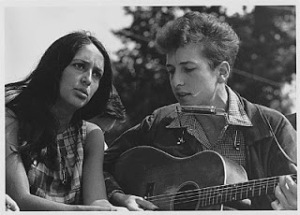 You say you want a revolution? In the heady days of the 1960s and early ’70s, the counterculture used to speak “truth to power” and stand up to “the man.” In those years of my youth, the baby boomers were eager consumers of that counterculture, challenging the power of a culture allegedly dominated by conservative, rich, white men.
You say you want a revolution? In the heady days of the 1960s and early ’70s, the counterculture used to speak “truth to power” and stand up to “the man.” In those years of my youth, the baby boomers were eager consumers of that counterculture, challenging the power of a culture allegedly dominated by conservative, rich, white men.
Those were heady times for hippies, yippies, and ordinary middle-class admirers of Woodward and Bernstein, the latter helping force a sitting president to resign his office, for the first time in the history of the United States. Thus was the counterculture defined and its power affirmed.
Back then, it’s safe to say, few people imagined that the counterculture would become the main culture before the turn of the 21st century. The progressive left now essentially controls all the levers of cultural power, from Hollywood to the media, education, and even ESPN (which is owned, after all, by Disney; iin fact, sports journalism today is every bit as dominated by liberal opinion as your average Ivy League teacher’s lounge). Yes, you’ve come a long way, baby, from Woodstock and All in the Family.
It wasn’t too long ago that conservatives accepted the liberal hegemony of professions of cultural influence as an eternal given, much as most everyone thought of the Soviet Union, before the fall of the Berlin Wall. The liberal dominance of today’s culture, however, is just as feeble as that wall, and it will in due course disappear into the dustbin of history with its soulmate, the USSR.
I began to realize the importance of culture to the political direction of the country after the midterm election of 2006. Conservatives had obsessed and spent hundreds of millions of dollars on politics since the 1950s, yet nothing changed—at least, not for the better. Government just kept getting bigger, and what was then called liberalism marched on unabated. Even when Republicans were in power, governing bore little resemblance to the Founders’ vision, instead largely conserving gains progressives had already made and ensuring the economy worked only well enough to support the continually expanding welfare state.
Those days of a monolithic progressive-left culture are over. With the rise of talk radio, Fox News, and Internet freedom, conservatives and libertarians finally had a voice in the media that the liberal gatekeepers could not suppress. The right, broadly speaking, now knows the central importance of education, entertainment, and media for the health of the Republic, and that we must make our voices heard in those spheres. Thus we are finally seeing the rise of a new counterculture, this time a conservative one. Conservatives and libertarians are the new radicals, the extremists, as the left is so fond of calling anyone who questions their hegemony. Now it is conservatives who are speaking truth to power and standing up to The Man.
This movement for a robust and powerful conservative counterculture is really just beginning, and the liberal cultural elite will one day wake up to the fact that their domination of American culture was not eternal after all. Bestselling author Andrew Klavan has been beating the drum for a conservative countercultural drum for many years now (as has TAC editor S. T. Karnick, for even longer), and the conservative movement is finally starting to see the sense in their vision. In a seminal piece in Frontpage Mag from earlier this year, Klavan discussed “The Trouble with the Arts,” arguing that the sensible response to popular culture’s war on America and what remains of its traditional values and institutions is simply to fight back, using the same tools as the enemy. Importantly, he argues, complaining about the culture is not a sufficient response; conservatives and libertarians must engage in the culture:
For those conservatives with artistic talent and ambition this is a spectacular moment to take to the barricades.… But to take advantage of this moment, conservatives have to come to grips with a situation that they naturally find uncomfortable: to wit, we are now the counter culture. We need to act like the rebels we now are and stop trying to win the favor of the big studios and publishers and mainstream reviewers. We need to make stuff. Good stuff. And get it out to the audience any way we can.
Klavan’s essay also includes a great disquisition on the nature of art and how conservatives should respond and engage the culture. It is a must-read.
But after you’re finished reading, it’s time to act. And if you’re like the great majority of people and don’t have the time or perhaps the talent to create works of art or popular culture, you can engage the culture usefully as a wise consumer and an adviser to others. You can affect the culture from the demand side as well from the supply side that Klavan represents.
Attending regularly to The American Culture is an excellent way to do that, and we are in the process of ramping up our efforts to provide even more news, information, and analysis of cultural trends you can affect as a consumer and in discussions with family, friends, and associates. Come back every day, and let us know what you think about your culture and where it’s going.


—Also, a pre-counter-culture Disney version of “tangaled”
“Stick with Moma, Skip The Drama…:
Disney is part of the1960s counter-culture?
How would a pre-counter-culture Disney Movie like “Eight Below” or “Snow Dogs” differ from the current versions of these films?